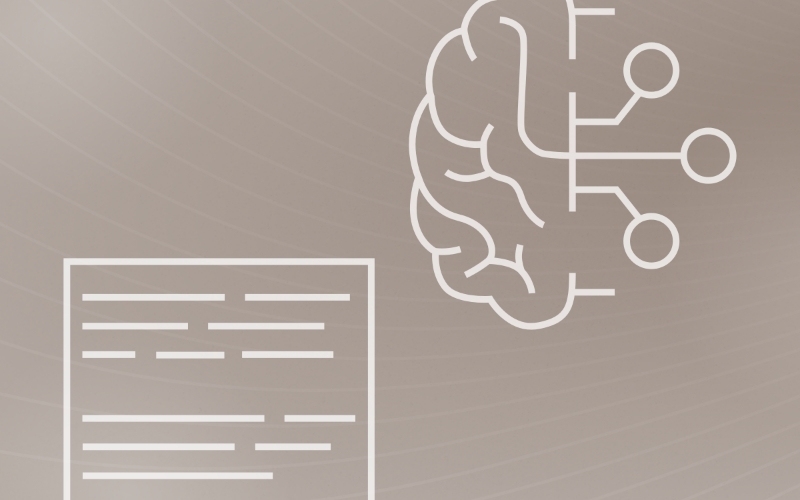Industry Trends

Written By
Wray Ward
On November 30, 2022, OpenAI released ChatGPT for public use. Of course, that’s old news by now. Almost 10 months later, the AI technology landscape is still changing every day.
We’ve all heard the promises of expanded creative universes and lightning-fast content creation. If numbers are any indication, there’s a lot of hope for — or at least curiosity about — the potential of AI. In fact, ChatGPT reached 100 million active users in January, making it the fastest-growing application in history until Threads beat it six months later. (Unlike ChatGPT, Threads has struggled to hold onto its active users, but that’s a story for another day.)
From a business standpoint, the most promising enterprise-level uses seem to be at the intersection of integration and automation. It’s about making systems work harder to solve problems without the human element, allowing the machines to make connections between data points, problem-solve and rectify issues.
But for those of us in the creative marketing communications business, most of these issues aren’t our issues.
Instead, at Wray Ward, we’re searching for AI solutions that promise future efficiency and allow us to scale our work. How can AI push our strategic and creative thinking? Complement our human imaginations? Help us build digital platforms? Crunch data?
So far, we’ve found that like all tools, AI platforms work only as well as the craftspeople wielding them. Recently, Wray Ward offered a webinar to share some of the lessons we’ve learned.
Here’s a quick recap.
What’s the state of AI in the world at large?
We’ll stick with ChatGPT for a minute since it’s dominated so much of the news and social media chatter related to AI. The application’s elasticity may be its most defining feature: According to Forbes, users are tapping into the AI chatbot for everything from content creation to customer service.
Common Uses of ChatGPT
Businesses: Professionals of all kinds are using the chatbot to automate tasks such as drafting simple emails and writing code.
Content creation: Journalists, copywriters and content creators are using ChatGPT to generate creative ideas, draft articles and even write poetry.
Customer service: Companies are leveraging ChatGPT to automate responses for common inquiries.
Education: ChatGPT is being used to create intelligent tutoring systems capable of providing personalized assistance to students.
Entertainment: ChatGPT can be used to generate video game storylines and movie scripts, write dialogue and improve gaming.
Health care: Providers and staff can leverage the chatbot for use cases such as clinical decision support, medical recordkeeping, disease surveillance, and the analysis and interpretation of medical literature.
Keep in mind, however, that despite the stunning growth of ChatGPT and other AI technologies, these tools’ usage rates still pale in comparison to Google (85 billion visits a month to ChatGPT’s 1.6 billion) and other mainstays.
With that said, how big can AI really get?
In July, there were an estimated 58,000 AI companies worldwide. But as the Wall Street Journal reported, the vast majority of AI tools are struggling to move from “cool, new technology” to profitability. By 2024, AI applications trying to make an entrance will do so at the risk of irrelevance. I spoke with a chief technology officer on a private equity advisory board who agrees most AI startups could go out of business as early as next year.
Bubbles are more apt to happen whenever a bunch of people race to jump on a bandwagon: Some of the average may survive, but the weak likely won’t, especially since Google and Microsoft continue to drive the space. It’s a good cautionary tale for any business to not build too much process around these start-up applications until it’s clear that they’ll be viable in the future.
What’s more, information security is still a huge concern. Large language models such as ChatGPT are trained on the inputs they receive, meaning companies are right to worry about protecting their data from the public sphere.
Even so, 80% of Fortune 500 companies already have employees using ChatGPT for work, as determined by the number of registered and active user accounts associated with corporate email domains. This helped fuel the emergence of ChatGPT Enterprise — the most powerful version yet — with enterprise-grade security and privacy. This is really important progress and provides businesses with an added layer of security.
What’s the state of AI at Wray Ward?
At Wray Ward, we’re working hard to stay up to speed on the AI evolution. To foster our culture of innovation, exploration and collaboration, Wray Ward created a cross-functional leadership team and five working groups.
The groups focus on topics specific to:
Copy
Creative
Policy
Research
Technology and data
Our mission is to identify and explore AI technologies and platforms with one key question in mind: Can this tool drive greater results for my clients or my team?
To that end, we charged our AI team with:
Conducting needs analyses
Researching technologies
Evaluating scalability
Assessing ease of use
Training and supporting our teams
Determining ROI
The opportunities to integrate AI tools into our work are all around us. This, in turn, has made it critical to maintain focus as we test tools and make decisions. While we’re still in the early stages, here are some of the ways we’ve put AI technologies to the test:
Early AI Experiments at Wray Ward
Conducting SEO activities with ChatGPT plug-ins
Using generative fills in Photoshop (see how we improved an original photo with generative fill and human retouching)



